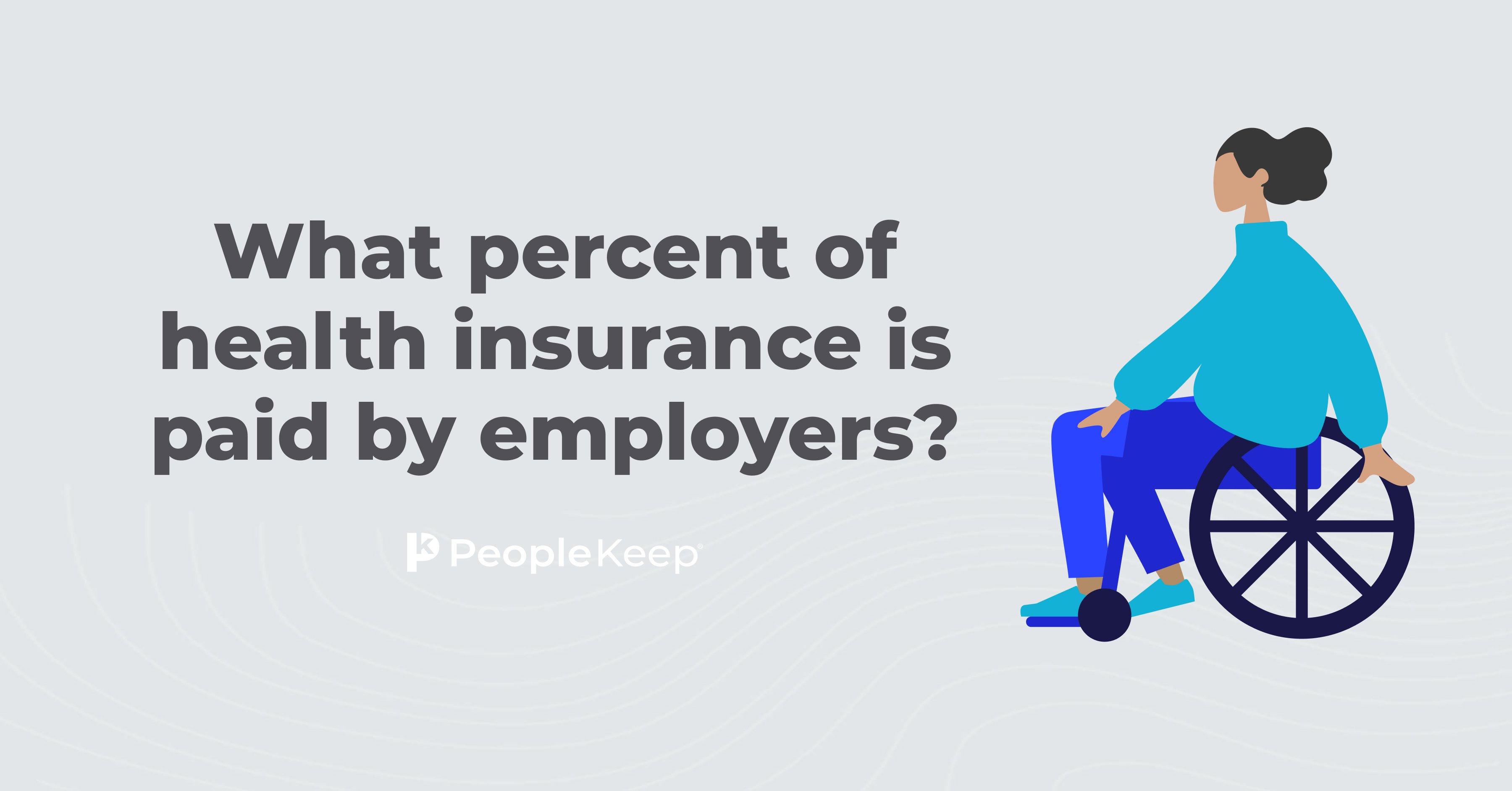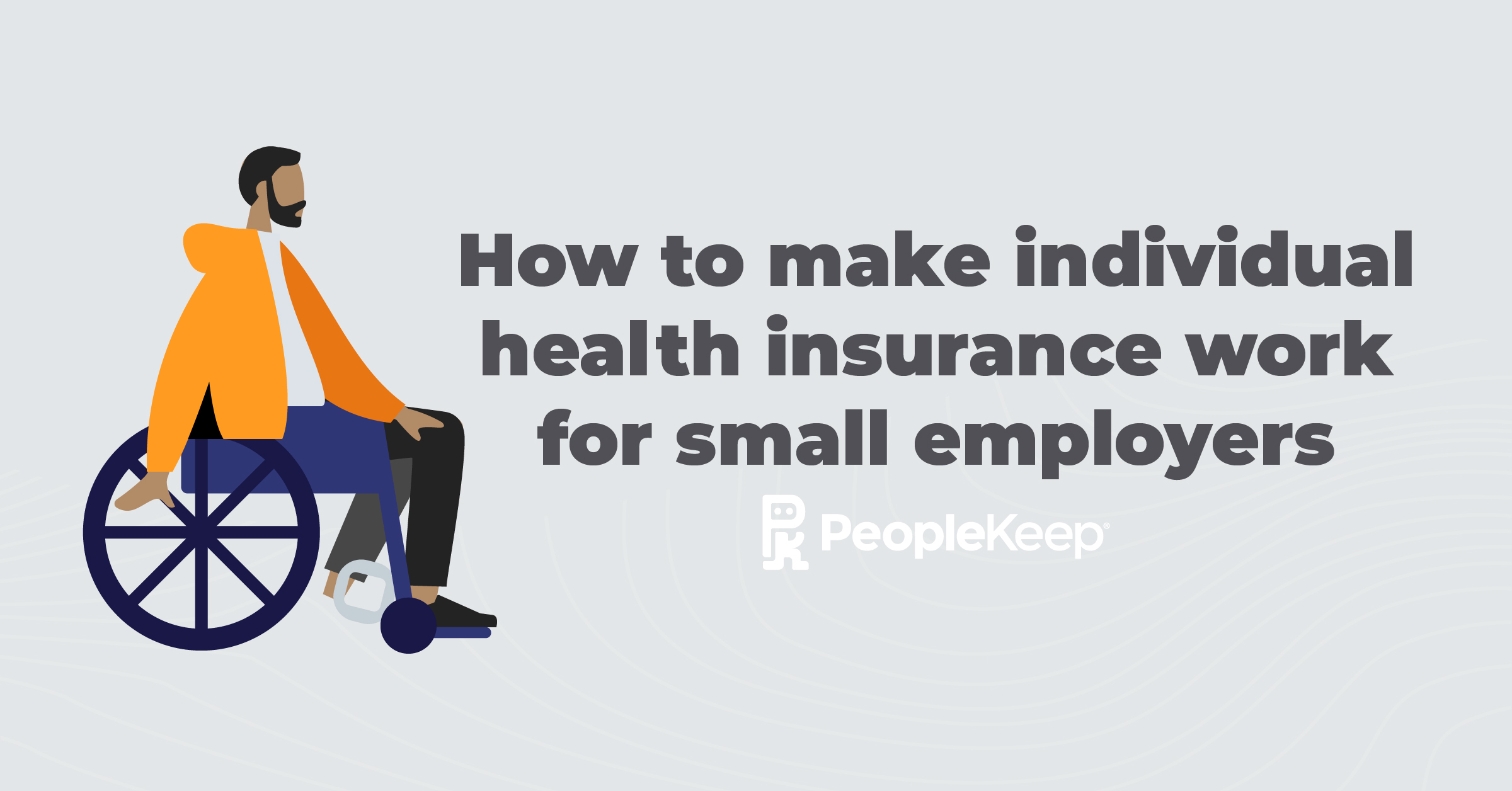How much do employers pay for health insurance?
By Elizabeth Walker on July 6, 2023 at 9:44 AM
Whether they’re exploring health benefits for their organization for the first time or looking to switch to a more affordable health insurance option, a common question business owners have is how much health insurance costs per employee.
Rising healthcare costs can make employers second-guess offering an employee health benefit. But the cost of losing employees by not offering health insurance can surpass the cost of providing one. So having some type of health benefit in your compensation package is vital.
This article will break down the average employer health insurance cost per employee and the average cost of employer-sponsored health plans. We’ll also explain how you can use a health reimbursement arrangement (HRA) to control your budget.
How much does group health insurance cost?
When an employer provides health insurance coverage to employees, they purchase a plan (or plans) to cover all eligible employees and their dependents. This type of plan is commonly called a group health coverage plan, an employer-sponsored plan, or a “fully-insured plan.”
According to KFF1, in 2023, the average annual cost of employer-sponsored health insurance premiums per employee was $23,968 for family coverage and $8,435 for single coverage. Many employers also continued offering valuable telemedicine, mental health services, and wellness programs.
Although specific costs will vary due to many key factors, like your health insurance company and firm size, the average cost of group health plans will typically increase annually.
How much do employers pay for health insurance?
If you’re an employer offering health benefits for the first time, ensuring you have the budget to help your employees with the cost of the health benefit is fundamental to retaining talent and attracting new employees. The portion you pay toward the cost of employees’ health coverage will vary based on your company, but we’ll give you an idea of the average contribution amounts.
In 2022, the average share employers contributed toward group health insurance premium costs was 73% for family coverage and 83% for single coverage. This equated to $16,357 annually for family coverage and $6,584 annually for single coverage per employee. Average premiums for family coverage have increased 20% over the last five years and 43% during the previous 10 years.
.png?width=756&height=615&name=Screenshot%20(81).png)
Image: KFF
How much does group health insurance cost for employees?
Looking again at KFF’s health benefits report, in 2023, group health insurance participation cost employees $6,575 annually for family coverage and $1,401 annually for single coverage. They contributed 27% and 17%, respectively, toward the total cost of single coverage and family premiums. Employees typically pay their monthly premiums through payroll deductions on a pre-tax basis.
Average premiums tend to rise every year. In fact, PwC’s Health Research Institute2 projects healthcare costs to increase by 7% in 2024. This is higher than the 5.5% increase seen in 2022 and the 6% increase in 2023.
To better control the cost of health insurance, we’ll go over how you can change contribution strategies or plan features in the section below.
How you can control group health insurance costs
Although medical care is considered one of the most expensive benefits you can offer at your organization, it’s an important investment in your company’s future. By better understanding what major factors affect your health benefits costs, you can gain greater control over your budget and set your employees up for success.
How much your employer-sponsored health insurance costs will depend on the criteria listed below:
- The insurance carrier
- The plan type, such as a preferred provider organization (PPO) or health maintenance organization (HMO)
- The network of providers in the plan
- Plan features such as annual deductibles, copayments, out-of-pocket maximums
- Your location
- The employer contribution amount (you can move more of the cost burden onto your employees)
- The demographics of your employees or your plan health insurance rates for the “risk pool” at your company
- For example, older workforces may have health conditions that result in higher medical costs, which might increase your rates
How you can use HRAs and stipends to provide affordable healthcare coverage
If covering the cost of a group plan and paying its associated health premiums is out of reach for your organization, you can leverage an HRA as an alternative health benefit option and reimburse your employees for their qualified medical expenses, including their individual health insurance premiums.
The qualified small employer HRA (QSEHRA) and the individual coverage HRA (ICHRA) are two types of HRAs that work well for budget-conscious and time-strapped employers. The Affordable Care Act (ACA) created the QSEHRA specifically for small businesses with fewer than 50 full-time equivalent employees (FTEs). ICHRAs are similar to QSEHRAs, but they’re for employers of any size.
You can also offer a group coverage HRA (GCHRA), or an integrated HRA, to supplement an existing employer-provided health insurance plan. Some employers who move to higher deductive group policies to offset rate hikes will offer a GCHRA to cover out-of-pocket healthcare expenses like annual deductibles, copays, and other medical services and items.
With an HRA:
- The employer sets an annual or monthly allowance to reimburse employees for medical costs.
- Employees purchase their own health insurance plan on a private exchange or the federal marketplace.
- If you have an integrated HRA, only employees enrolled in your employer-sponsored health coverage can participate in the benefit. They can’t have an individual plan.
- Employees can choose a plan from their preferred health insurance company that meets their needs.
- Employees pay their monthly premiums and other medical costs; the employer reimburses them for eligible expenses up to their allowance balance.
- Unlike health savings accounts (HSAs), HRA funds stay with you until your employees make a qualified purchase.
For example, a young, single employee might opt for a high-deductible plan (HDHP) to reduce their annual premiums. In contrast, an older employee might choose a plan with a lower annual deductible and out-of-pocket maximum.
There are additional cost savings that come with an HRA. You decide your allowance amount, making the benefit budget-friendly and personalized. Reimbursements are free of payroll taxes for both you and your employees, lowering your tax liability.
They’re also free of income tax for the employee, as long as they purchase a medical plan that qualifies as minimum essential coverage (MEC). If an employee’s policy doesn’t meet MEC, they can still receive reimbursements. But they must pay income taxes on the amount during tax time.
Health stipends
While HRAs are an excellent option for organizations looking to lower their health benefit costs, they might not be best for every employer.
If you’re looking to add an HRA as your first health benefit or as a new option after canceling your employer-provided health insurance plan, you’ll need to consider your employees’ eligibility for premium tax credits. Some of your employees might become eligible for premium tax credits without employer-sponsored coverage.
With a QSEHRA, your employees must reduce their advance premium tax credit (APTC) by the amount of their QSEHRA allowance. Meanwhile, employees offered an ICHRA may be ineligible for APTC that they would’ve otherwise been eligible for.
Stipends can help to alleviate these concerns. While they’re like an HRA, they have greater flexibility and fewer regulations making them customizable enough for every organization. Health stipends are essentially extra employee wages added to their paychecks that they can use to pay for their monthly premiums and other out-of-pocket costs.
If your employees receive tax credits, they can keep those credits and take advantage of your employee health stipend. What’s more, health stipends are also a great option for organizations with employees in other countries.
An important aspect to consider with health stipends is that they’re taxable. Unlike HRAs, you must report your stipend contributions on your employees’ W-2 at the end of each year.
Additionally, stipends are not considered a formal health benefit and will not enable applicable large employers (ALEs) to meet the ACA’s employer mandate. While they’re both great options, an HRA could be a better fit for your organization in most cases.
Conclusion
Employees today expect employers to offer health insurance, but many organizations find group health plans to be an expensive benefit. While there are a few ways to reduce employer health insurance costs, HRAs are affordable health benefits that give you more control over your medical expenses.
Employers prefer an HRA because it provides more budget flexibility, and employees can purchase their own insurance plan—one that meets their healthcare needs.
This blog article was originally published on October 7, 2020. It was last updated on December 20, 2023.
Check out more resources
See these related articles

What percent of health insurance is paid by employers?
Wondering how much employers pay for health insurance? Learn the average employer contribution percentage and how it varies by plan and business size.

Can a business pay for employees' individual health insurance plans?
Find out if your small business can cover individual health insurance plans for employees. Learn more about the pros and cons of this option here.

How to make individual health insurance work for small employers
Wondering how small businesses can use individual health insurance? Discover strategies to offer flexible, affordable coverage to your employees.



